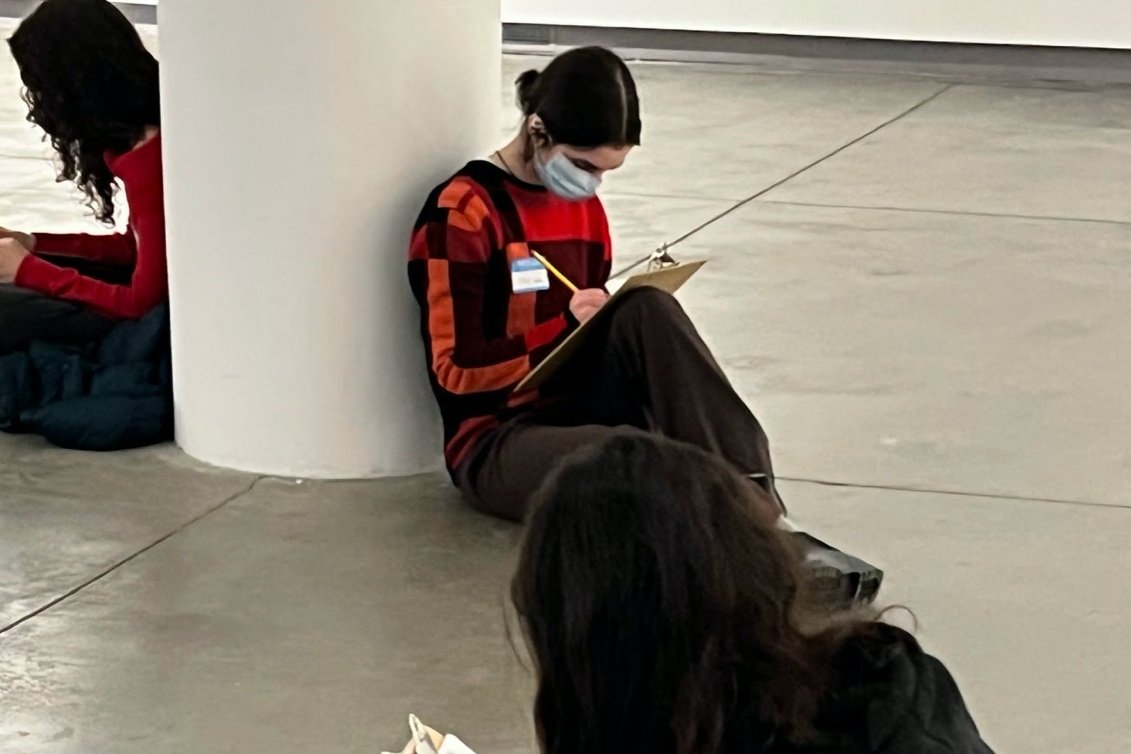
I led Portland High School students in a three-part journey contemplating the ICA exhibit Monitor: Surveillance, Data, and the New Panoptic. Through art making, discussion, and writing, the students considered the concepts of surveillance and privacy, and the personal information they wanted to protect.
Classroom Lesson
The project began with a visit to Portland High School where we shared a slideshow to introduce the ICA exhibit on surveillance and to talk about the importance of privacy. We also discussed a controversial art project called "The Neighbors" in which artist Arne Svensen took photos of people in their own homes — and the surprising verdict of the lawsuit that ensued. After talking together about the personal information we share on our smart phones, including our fingerprints, the students engaged in a project to contemplate identity: creating self portraits using only ink and their own fingerprints.
ICA Lesson
At the ICA, the students broke into pairs and engaged in an artwork exploration by choosing one piece in the exhibit to write about and draw. Afterward, we all gathered in a circle to share our observations and learn more about the artworks and the artists who made them. The discussion was engaging and insightful — mostly because these were bright, thoughtful students and partly because they’d had a chance to observe and reflect on their chosen piece before sharing with the group. The activity encouraged positive social interaction and active engagement in learning. After the circle discussion, the students participated in a “privacy take back” activity in which they sat alone and wrote something confidential, and then empowered themselves by redacting it with black ink (tape) to keep it safe.
Space Gallery Lesson
At Space Gallery, the students dove into a 90-minute art-making project that reflected on the ICA exhibit. They created cardboard camera lenses with watching eyes and cell phones with scenes of private moments. They covered the cell phones with transparent colored cellophane so that, from a distance, the content seemed protected, but observed at close range, the content was clearly available and exposed. The students came up with thought-provoking scenes that spoke to the concepts of privacy and surveillance both directly and indirectly, including current location information, search histories, a home address, account passwords, a confidential conversation, and a private photograph. Once the students completed their artwork, they came together on the stage to determine how to lay out all of the pieces into a collaborative installation. The final project titled "Access Granted" is displayed on the third floor of their high school.











